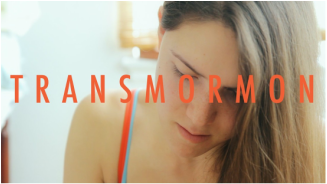 Eri Hayward discusses her life as a trans woman Eri Hayward discusses her life as a trans woman Tags: inequality, intersectionality, lgbtq, prejudice/discrimination, religion, cisgender, mormon, trans*, transgender, subtitles/CC, 11 to 20 mins Year: 2014 Length: 14:52 Access: YouTube; Vimeo Summary: This short documentary entitled Transmormon, tracks the life of Eri Hayward, who was born and raised in Utah as a Mormon. Eri discusses how she had to come to terms with the fact that the gender she was assigned at birth was not the gender she knows herself to be. As she prepares for sex reassignment surgery, she and her parents recount her journey and how she has worked to reconcile her transgender identity with her religious beliefs as a member of the Church of Jesus Christ of Latter-day Saints. People are often hesitant to talk about what has been clearly stigmatized, so Transmormon provides an an excellent means of beginning a discussion about transgender experiences and identities. The film centers on Eri's intensely personal experiences growing up, but students can be encouraged to think about the implications of widespread stigmatization against transgender people, including the role it plays in creating high levels of violence and discrimination, higher rates of suicide, and inferior access to health care. To learn more about the public issues many transgender people face, explore our Pinterest board on the topic. Submitted By: Samuel H. Allen
3 Comments
 Blackness is associated with criminality in this Bridesmaids scene. Blackness is associated with criminality in this Bridesmaids scene.
Tags: crime/law/deviance, prejudice/discrimination, race/ethnicity, criminalizing blackness, racial profiling, racism, 00 to 05 mins
Year: 2011 Length: 2:18 Access: YouTube Summary: In this scene from the popular romantic comedy Bridesmaids (2011), Annie (Kristen Wiig) attempts to get the attention of State Patrol Officer Nathan Rhodes (Chris O'Dowd). A budding romance has started between the two, but in this scene Rhodes is upset with Annie and ignores her attempts to communicate. In an effort to appeal to his obligations as a patrol officer, Annie proceeds to engage in various reckless driving activities, hoping that her reckless behavior behind the wheel will require Officer Rhodes to pull her over, thus giving her an opportunity to talk to him. Some of the reckless driving behaviors that Annie engages in include texting, talking on the phone, pretending to consume alcohol, speeding, doing donuts, driving topless, driving without looking where she's going, and throwing litter out the window, aimed at the uniformed officer. These various actual driving offenses are seamlessly placed alongside another activity that Annie performs in the hopes of being pulled over: sitting in a reclined position listening to loud rap music. Of course, this last activity is not a legal offense. Culturally, this behavior is predominantly associated with black male urban youth. This scene illustrates the deeply embedded association between blackness and criminality in American culture, an argument that Khalil Gibran Muhammad (2011) explores more thoroughly in his book The Condemnation of Blackness and Michelle Alexander (2010) in her book The New Jim Crow. Despite doing nothing illegal when she drives with her seat back listening to Ice Cube, this racially coded behavior is deemed illegal, suggested to be a legitimate infraction for which one can be pulled over. Such cultural messages reinforce and perpetuate the racial profiling practices described by the vernacular pun of getting pulled over for a “DWB” (Driving While Black). Viewers can be encouraged to think about other examples of how practices associated with blackness are criminalized in American society. Submitted By: Valerie Chepp 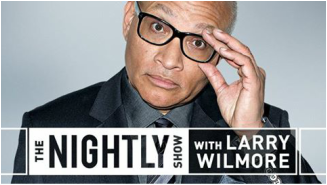 Wilmore and guests discuss Black fatherhood on The Nightly Show Wilmore and guests discuss Black fatherhood on The Nightly Show Tags: community, demography/population, marriage/family, media, methodology/statistics, prejudice/discrimination, race/ethnicity, fatherhood, larry wilmore, parenting, racism, stereotypes, subtitles/CC, 21 to 60 mins Year: 2014 Length: 21:29 Access: The Nightly Show Summary: When people hear the majority of Black babies are born “out-of-wedlock,” most either feel dismay or distrust at the statistic. However, Larry Wilmore and his panel of artists, authors, and activists confront the accuracy of this statistic and Black fatherhood more generally in a roundtable discussion. In Part 1, New York Times columnist Charles M. Blow explains how context matters, and the rate of births to unmarried Black women reflects the decline in fertility for married Black women, the mass incarceration of Black men, the diminishing importance placed on the traditional nuclear family, and the embracement of more flexible parental roles in our cultural more generally. Part 2 begins with a discussion about how media figures and politicians utilize deeply embedded racial (or racist) stereotypes to explain this statistic (and many others) in prejudicial ways. Part 2 then closes with the panelists offering their own experiences with their fathers and being dads themselves, thus revealing how in the interpreting of statistics many people (perhaps sociologists even more so than others) reify and over-generalize numbers, forgetting every “case” in a sample is actually a unique person, with their own unique experiences that is not readily apparent in macro data. Submitted By: Jason T. Eastman 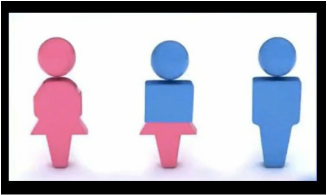 ISU adds gender-neutral labels to its restrooms ISU adds gender-neutral labels to its restrooms Tags: crime/law/deviance, gender, inequality, knowledge, lgbtq, media, prejudice/discrimination, sex/sexuality, social construction, agender, androgyne, bigender, gender fluid, genderqueer, neutrois, non-binary, trans*, transgender, 00 to 05 mins Year: 2014 Length: 0:50 Access: Mediaite Summary: In this clip from Fox & Friends Heather Nauert reports that Illinois State University recently relabeled its "family” restrooms as "gender-neutral." She kicks off the segment by saying,"Someone call the P.C. police!" and warns that viewers are "not going to believe this one.” The giddy laughter of her off-camera colleagues is audible while she delivers her exasperated explanation of the new restroom symbols. The video is useful in any class wrestling with the social construction of gender, the gender binary, and consequences of rigidly enforced gender categories. People who identify as transgender, two spirit, demiguy, demigirl, bigender, non-binary, trigender, third gender, genderqueer, gender fluid, androgyne, neutrois, and agender (and others) have often reported instances of ridicule and danger faced when using public restrooms. For this group, the labeling change means the difference between being able to safely use public restrooms at their university. What is interesting is not the change toward more inclusive signage at Illinois State University, but how Fox & Friends uses their platform as a major news network to actively police the gender binary. Nauert begins by framing the change as an instance of political correctness, a term that suggests the new signs are of trivial importance. The demeanor of both newscaster and her off-camera colleagues is another cue that viewers should not regard the change as an important or positive development at Illinois State University. Although times are changing, news programs still give lip service to the idea that their job is simply to give the public impartial (i.e., fair and balanced) information about important events. What is discussed less is the role the media plays in shaping the public's understanding of those events and reconstituting the state of affairs where excluding people who do not conform to the gender binary is acceptable. For more information about bathrooms as a site of gender politics, check out our Pinterest board on the topic. Submitted By: Lester Andrist 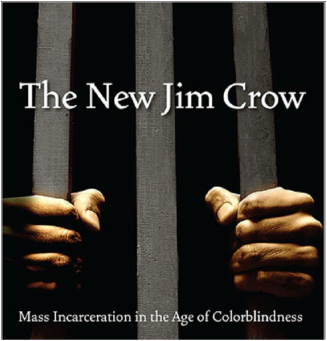 The book's main ideas are summarized in this short video clip. The book's main ideas are summarized in this short video clip. Tags: class, crime/law/deviance, inequality, prejudice/discrimination, race/ethnicity, colorblind racism, mass incarceration, prison industrial complex, war on drugs, 06 to 10 mins Year: 2013 Length: 8:23 Access: YouTube Summary: Legal scholar Michelle Alexander’s (2010) book The New Jim Crow: Mass Incarceration in the Age of Colorblindness has received critical acclaim and has quickly become a core text in many sociology classrooms. This short video highlights the main arguments advanced in the book, and features the insights and opinions of various key thinkers, scholars, and activists. As summarized on the book’s website, “The New Jim Crow is a stunning account of the rebirth of a caste-like system in the United States, one that has resulted in millions of African Americans locked behind bars and then relegated to a permanent second-class status—denied the very rights supposedly won in the Civil Rights Movement. Since its publication in 2010, the book has appeared on the New York Times bestseller list for more than a year; been dubbed the ‘secular bible of a new social movement’ by numerous commentators, including Cornel West; and has led to consciousness-raising efforts in universities, churches, community centers, re-entry centers, and prisons nationwide. The New Jim Crow tells a truth our nation has been reluctant to face. As the United States celebrates its ‘triumph over race’ with the election of Barack Obama, the majority of black men in major urban areas are under correctional control or saddled with criminal records for life. Jim Crow laws were wiped off the books decades ago, but today an extraordinary percentage of the African American community is warehoused in prisons or trapped in a parallel social universe, denied basic civil and human rights—including the right to vote; the right to serve on juries; and the right to be free of legal discrimination in employment, housing, access to education and public benefits. Today, it is no longer socially permissible to use race explicitly as a justification for discrimination, exclusion, and social contempt. Yet as civil-rights-lawyer-turned-legal-scholar Michelle Alexander demonstrates, it is perfectly legal to discriminate against convicted criminals in nearly all the ways in which it was once legal to discriminate against African Americans. Once labeled a felon, even for a minor drug crime, the old forms of discrimination are suddenly legal again. In her words, ‘we have not ended racial caste in America; we have merely redesigned it.’ Alexander shows that, by targeting black men through the War on Drugs and decimating communities of color, the U.S. criminal justice system functions as a contemporary system of racial control, even as it formally adheres to the principle of colorblindness. The New Jim Crow challenges the civil rights community—and all of us—to place mass incarceration at the forefront of a new movement for racial justice in America.” Alexander elaborates upon these ideas in more detail in her 2012 convocation speech at Carleton College, which can be found here. A trailer for the book can be found here. Submitted By: Valerie Chepp 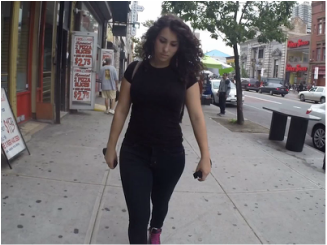 A scene from the Hollaback viral video of a woman walking in NYC A scene from the Hollaback viral video of a woman walking in NYC Tags: gender, inequality, intersectionality, media, prejudice/discrimination, race/ethnicity, violence, feminism, patriarchy, sexism, sexual harassment, street harassment, subtitles/CC, 00 to 05 mins Year: 2014 Access: YouTube (See also this supplemental video documenting the testimonies of women who have been street harassed) Summary: Street harassment has been a hot topic ever since the activist organization Hollaback! posted a slick new video, which records the catcalls aimed at a woman who walks for ten hours in New York City. While many men have described the video as opening their eyes to the harassment women face each day, many more men it seems have chided the video as little more than staged feminist wailing. They claim that in fact most women love compliments both on and off the street, and men have every right to simply say what's on their minds. For starters, the video can be used to recreate this core public debate in the classroom, thereby engaging students and communicating the relevancy of the material for their lives. Once the contours of this debate have been roughly defined, it is useful to bring both legal definitions and empirical evidence into the conversation with the aim of causing students to reevaluate their stance on street harassment and what they think they know about "most women" or "most men." In terms of legal definitions, it can be pointed out that street harassment falls under the CDC's definition of sexual violence, which it defines as any "sexual activity where consent is not obtained or freely given." Crucially, the CDC adds that not all forms of sexual violence "include physical contact between the victim and the perpetrator...for example, sexual harassment, threats, and peeping" (my emphasis; Stop Street Harassment offers a comparable definition). A second point to make is that whether women secretly love to be catcalled is an empirical question, and the evidence suggests they do not. In a recent nationally representative survey of 1,000 women and 1,000 men (age 18 and older), 65% of women reported experiencing at least one type of street harassment in their lifetimes. About 57% of all women had experienced verbal harassment, and 41% of all women had experienced physically aggressive forms, including sexual touching (23%), following (20%), flashing (14%), and being forced to do something sexual (9%). By comparison, only about 25% of men reported being street harassed. The majority of women who experienced harassment were at least somewhat concerned the incident might escalate. While the video is a vivid illustration of street harassment, it is not without fault. Writing for Colorlines, Akiba Solomon notes that although she likes the video as a teaching tool, one rather glaring problem with it is that the vast majority of men bothering the woman are black and Latino. The ad agency responsible for editing admitted that most white men who catcalled the twenty-something woman didn't make the final cut because the audio was less clear, Solomon rightly points out that by posting the video with the white perpetrators erased—whatever the justification—Hollaback! is engaging in "a dangerous lie of omission and implying that black and brown men are particularly predatory." In my view, Solomon's intersectional critique of the film needs to take centerstage in any discussion involving this video, for if we're not careful, the fight to end sexist harassment will come at the expense of establishing new justifications for racist harassment (Check out other posts on street harassment from The Sociological Cinema here, here, and here, and explore the topic on our Pinterest board here). Submitted By: Lester Andrist  This short film examines the changing lives of gay men in rural UK. This short film examines the changing lives of gay men in rural UK. Tags: aging/life course, emotion/desire, lgbtq, prejudice/discrimination, rural/urban, sex/sexuality, adolescence, gay, performative social science, uk, 21 to 60 mins Year: 2012 Length: 30:00 Access: Vimeo Summary: Rufus Stone is a short film about "love, sexual awakening, and treachery." According to Director Josh Appignanesi, "the story dramatizes the old and continued prejudices of village life from three main perspectives. Chiefly it is the story of Rufus, an ‘out’ older gay man who was exiled from the village as a youth and reluctantly returns from London to sell his dead parents’ cottage, where he is forced to confront the faces of his estranged past. Of these, Abigail is the tattle-tale who ‘outed’ Rufus 50 years ago when he spurned her interest. She has become a lonely deluded lush. Flip, the boy Rufus adored, has also stayed in the village: a life wasted in celibacy (occasionally interrupted by anonymous sexual encounters) and denial (who is) looking after his elderly mother. But Rufus too isn’t whole, saddled with an inability to return or forgive." The film is based on three years of a Research Council UK funded study of the lives of older lesbians and gay men in south west England and Wales, a part of the national New Dynamics of Ageing Programme of research. The project was led by Kip Jones, who also wrote the story and acted as Executive Producer for the film. Winner of two awards, the film has gone on to be screened at film festivals, other universities in the UK, USA and Canada and by organizations such as Alzheimer’s Society UK, LGBT groups, and health, social and aging support networks. Screenings of the film would be appropriate for a wide variety of audiences, including in undergraduate and graduate teaching, community groups, and LGBT and aging support organisations. Viewers can access more information about the project and film at the Rufus Stone Blog. Submitted By: Kip Jones 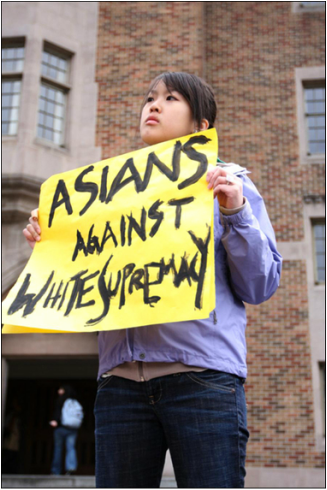 A student protests at the University of Washington (photo by Nick Feldman) A student protests at the University of Washington (photo by Nick Feldman)
Tags: economic sociology, education, inequality, methodology/statistics, organizations/occupations/work, prejudice/discrimination, race/ethnicity, aapi, asian american, income inequality, institutional discrimination, racism, white privilege, white supremacy, 00 to 05 mins
Year: 2014 Length: 2:43 Access: YouTube Summary: Here's an empirical fact that isn't acknowledged nearly enough: the United States is a white supremacist state. It has been a white supremacist state from the late 18th century right up to the present day, and while this conclusion may strike many as provacative or vulgar, it is not controversial among those who rely on empirical data to inform their views. To put it in different terms, there is a racial hierarchy in the U.S. and whites are at the top. White folks—myself included—receive the lion's share of power, privilege, and resources. Needless to say, whites are not inherently better or more deserving; nor have we received a disproportionate share of assets and resources because we have worked harder than People of Color. Our privileged position is because the institutions Americans navigate each day have been built to favor whites. Borrowing from writer John Scalzi's video game metaphor, whiteness affords those who have it the ability to play the game of life on the lowest difficulty setting. Metaphors are useful, but where is the evidence? In short, the evidence is everywhere. One need only look at patterns of housing discrimination, employment discrimination (and here), racial profiling (and here), incarceration, various health outcomes, poverty, wealth inequality, and income inequality, to name a few. But look once more at that last link on income inequality. Did you notice that in 2011 among full-time wage and salary workers in the United States, Asian Americans took home $872 on average compared to whites, who took home nearly $100 less? In a recent essay regarding Asian American discrimination, sociologist Tanya Maria Golash-Boza reported that by 2013 the pattern hadn't changed. Asians’ median weekly earnings were $973, as compared to $799 for whites. If Asians earn more, then why don't sociologists argue the U.S. is actually an Asian supremacist state? Or as the right-wing commentator Bill O'Reilly suggests in the above video, isn't it more accurate to talk about Asian privilege rather than white privilege? The video is useful for spurring discussion on this important topic, and I will conclude this post by suggesting a sociologically-informed "talking points" reply to O'Reilly. First, the average earnings statistic conceals the enormous variation found among different Asian subgroups. Given the disparity in earnings between Asians whose families immigrated from Southeast Asia and those from China, it is arguably misleading to lump these subgroups together. Second, education is a confounding variable, which is a shorthand way of saying that the income graph is misleading in yet another way. Asians look like they earn more than whites, but this is only because Asians have more education on average. The reason why Asians have higher average levels of education is a topic The Sociological Cinema has tackled elsewhere, but what O'Reilly's narrative of Asian privilege cannot explain away is the fact that when one compares whites and Asians who are in the same field, live in the same place, and have the same level of education, whites earn more (see Kim et al., 2010). Third, just as the election of Barack Obama did not suddenly end racism in the U.S., the determination of whether the United States is white supremacist does not hinge on a single measurement of well-being. Even if one makes the incredible leap of faith and believes Bill O'Reilly is competantly grasping the available data, it is important to remember that the labor market is but one dimension of human experience and only one place where racism has been measured. For instance, O'Reilly has not even begun to address cultural dimensions of white supremacy, such as white standards of beauty and masculinity. Submitted By: Lester Andrist 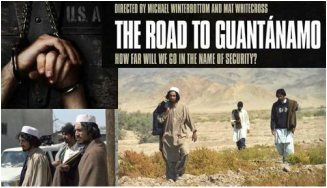 This docu-drama illustrates human rights abuses in the war on terror This docu-drama illustrates human rights abuses in the war on terror Tags: crime/law/deviance, government/the state, prejudice/discrimination, race/ethnicity, religion, war/military, human rights, muslim, racism, rendition, war on terror, 61+ mins Year: 2006 Length: 1:29:43 Access: YouTube Summary: The Road to Guantánamo is an "award-winning, intense, political, docu-drama about the Tipton Three, a trio of British Muslims who were held in Guantanamo Bay for two years until they were released without charge." Just days after 9/11, the three men traveled to Pakistan to attend a wedding. They crossed the border into Afghanistan at the same time that the US began military operations there, and after a series of missteps, they were left stranded. They were captured and transferred to the US military, who had mistaken them for Taliban fighters, and sent them to Guantanamo Bay Naval Base. The Tipton Three were exposed to harsh interrogation techniques but never charged, and eventually were released in 2004. A compelling feature in the film is the combination of first person narratives by the three you men, Ruhal Ahmed, Asif Iqbal and Shafiq Rasul, who appear as themselves in a talking head format alongside dramatic reconstructions of their actual experiences. For example, the film conveys a sense of what it feels like to experience noise bombardment and the 'futility torture' techniques where music is played (e.g. Metallica, James Taylor) to prisoners at deafening volumes in dark rooms. The video can be usefully paired with an article by Suzanne Cusick (2008), “'You are in a Place that is out of this World ...": Music in the Detention Camps of the 'Global War on Terror.'" For a similar account of torture techniques used in the US war on terror at Guantanamo Bay, see this news clip featuring an interview with Muhammad Saad Iqbal Madni. Submitted By: Les Back  Dropping a letter from his name was important to job market success. Dropping a letter from his name was important to job market success. Tags: economic sociology, inequality, organizations/occupations/work, prejudice/discrimination, race/ethnicity, hiring, hispanic, institutional discrimination, labor market, racism, stratification, 00 to 05 mins Year: 2014 Length: 1:10 Access: HuffPost Summary: In this brief video, José Zamora describes his frustrations applying to jobs and never getting responses from employers. He states that after sending out 50-100 applications per day, for months, he never received any responses from employers. He tried dropping the "s" from his name, becoming Joe Zamora. Within 7 days, he started getting responses from the same employers, using the same resume. José explains "I don't think people know, or are conscious or aware that they're judging, even if it's by a name. But I think we all do it all the time." Viewers might be encourage to wonder how our race and ethnicity is signaled and interpreted? How might this shape labor market outcomes and social stratification? While this description is only anecdotal evidence of racial discrimination, it is widely supported by audit studies that have tested for racial discrimination on the labor market. For example, we have previously written about institutional discrimination in this Freakonomics clip, where economist Sendhil Mullainathan discusses his (and co-author Marianne Bertrand's) 2004 field experiment that examined racial discrimination in the labor market (article here). They sent out 5,000 resumes to real job ads. Everything in the job ads was the same except that half of the names had traditionally African-American names (e.g. “Lakisha Washington” or “Jamal Jones”) and half had typical white names (e.g. “Emily Walsh” or “Greg Baker”). As they illustrate, people with African-American-sounding names have to send out 50% more resumes to get the same number of callbacks as people with white-sounding names. This study is further supported by Devah Pager's (2003) classic audit study, where she documented similar effects of racial discrimination through in-person applications. Thanks to Meredith Harrison for suggesting this clip! Submitted By: Paul Dean |
Tags
All
.
Got any videos?
Are you finding useful videos for your classes? Do you have good videos you use in your own classes? Please consider submitting your videos here and helping us build our database!
|
 RSS Feed
RSS Feed
